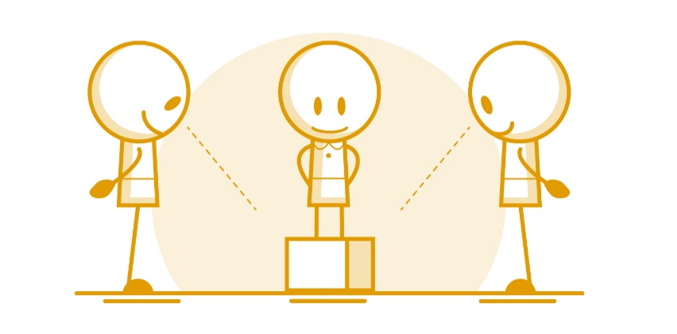A post from the Institute of Positive Education:
I think I have known for many years the importance of movement, the value of fun, and how significant connection is for student (and adult) learning!
The definition we use for a brain-break is any short activity that is a break from the specified learning activity and is designed to enhance relationships (teacher-student and/or student-student).

Why brain-breaks?
The experience of school for many students today is dominated by sitting. For much of their day, students are expected to sit still and learn. Whilst it is well- established that sedentary behaviour is associated with a range of health risks such as obesity and cardiac failure, neuroscience has also uncovered many reasons why we might also question such a sedentary approach to learning. Brain-breaks involve taking a short break in a lesson to engage in a burst of physical movement or a fun mental challenge. Pioneer of brain-based learning, Eric Jensen (2000) explains that movement has a positive effect on learning by:
- increasing circulation, thereby moving more oxygen to areas of the brain for learning
- supporting brain maturation processes such as pruning (eliminating unnecessary synapses), neurogenesis (new cell growth) and myelination (strengthening of existing processing pathways)
- allowing the brain to break from new content and form new memories
- regulating neurotransmitters such as dopamine and glutamate to enhance focus, mood and learning
Brain-breaks can increase student engagement
Studies over the last 15 years have shown promising results, suggesting brain-breaks have multiple benefits for student learning. A multitude of studies have shown that regular brain-breaks across the school day enhance students’ cognitive functioning and ability to sustain focus for academic work (Donnelly et al, 2009; Grieco, Jowers & Bartholomew, 2009; Ma, Mare & Gurd, 2014; Mahar, et al, 2006; Mahar, 2011).
Importantly, brain-breaks only take up a small amount of lesson time, yet the benefits of increased engagement levels and cognitive functioning have been found to significantly increase academic performance. Research has shown that students participating in regular brain-breaks display improved academic performance in core subjects like Mathematics and English, as well as academic standardised tests (Álvarez-Bueno, et al, 2016; Ahamed, et al, 2007). Additionally, brain-breaks have been shown to increase students’ perceived competence and raise classroom motivation levels (Vazou et al, 2012). Brain-breaks decrease students’ sedentary time and increase their overall level of physical activity across the day. Studies have also shown brain-breaks can have a positive influence on students’ Body Mass Index (BMI) and can support students maintaining a healthy weight (Liu, et al, 2008). Finally, and not surprisingly, brain-breaks have been shown to improve classroom behaviour and decrease student referrals for discipline issues (Sibley, et al, 2008).

Brain-breaks can strengthen teacher-student relationships
By providing students a social and fun break in a lesson, there is an increased opportunity and a new context for strengthening teacher-student relationships. Classrooms are dynamic environments where interactions between students and teachers continuously and powerfully affect learning, wellbeing and development. Brain-breaks alter the classroom climate by introducing a new collective action. Such activities have been shown to increase students’ positive emotions and enjoyment within the classroom (Howie et.al.,2014; Vazou, 2014).
Whilst there is no known research investigating the direct link between brain-breaks and teacher-student relationships, there is mounting evidence to suggest that they are positively correlated in a bi-directional fashion. Research has clearly shown that brain-breaks are likely to increase student engagement; when students are more engaged, teachers become more engaged, helping to nurture positive relationships (Hamre & Pianta, 2005). The positive student outcomes linked to regular brain-breaks (such as enjoyment, positive affect, improved classroom climate, intrinsic motivation), all have the potential to contribute to a caring community of learners.
As students progress through school, relationships with their teachers tend to become more distant and less comfortable, particularly for those students with low intrinsic motivation (Harter, 1996). Research has suggested that students have more positive perceptions of their teachers when they become more involved in their social environments (Skinner & Belmont, 1993). Brain-breaks, therefore, offers a possible way to protect students against declines in motivation and feelings of disconnection that some students may experience.
Tips for implementing brain-breaks
Brain-breaks are a low-cost, high-impact intervention for schools. Little training or additional resources are required to start building brain-breaks into lessons. To maximise the positive impact of brain-breaks, here are some tips and insights, many of which have been shared with us by teachers.
Be enthusiastic!
Your enthusiasm, or lack of it, is contagious and will impact student participation and buy-in.
Be developmentally appropriate
Ensure that the activities are developmentally appropriate to students’ age and not perceived as ‘babyish’.
Increase student agency
Ask students for feedback about their experience of brain-breaks, and seek their input and ideas to help develop and fine-tune the activities.
Expect that you will be able to inspire your students to enjoy these fun breaks
All of these tasks are relatively simple and unsophisticated. That doesn’t mean that your students can’t love them and reap the many benefits from participating in them.
Ensure a sense of belonging
Remember that one important aim for incorporating brain breaks is to help students develop a sense of belonging to the group. Brain breaks are best implemented within supportive school environments.
Keep the rules to a minimum
Explain the rules as briefly and as clearly as possible.
Don’t forget the value of brain-breaks
As a teacher, try to view brain-breaks as opportunities to enhance student learning rather than compromising learning time. Brain-breaks have enabled staff and students at GGS, and thousands of teachers at our Positive Education training courses to laugh, learn and connect. We wish you every joy as you prudently weave brain breaks into your teaching.
Resources
Brain breaks resources are available through the Institute of Positive Education.
References
Ahamed, Y., Macdonald, H., Reed, K., Naylor, P. J., Liu-Ambrose, T., & Mckay, H. (2007). School-based physical activity does not compromise children’s academic performance. Medicine and science in sports and exercise, 39(2), 371.
Álvarez-Bueno, C., Pesce, C., Cavero-Redondo, I., Sánchez-López, M., Pardo-Guijarro, M. J., & Martínez-Vizcaíno, V. (2016). Association of physical activity with cognition, metacognition and academic performance in children and adolescents: a protocol for systematic review and meta-analysis. BMJ open, 6(6), e011065.
Donnelly, J. E., Greene, J. L., Gibson, C. A., Smith, B. K., Washburn, R. A., Sullivan, D. K., … & Jacobsen, D. J. (2009). Physical Activity Across the Curriculum (PAAC): a randomized controlled trial to promote physical activity and diminish overweight and obesity in elementary school children. Preventive medicine, 49(4), 336-341.
Grieco, L. A., Jowers, E. M., & Bartholomew, J. B. (2009). Physically active academic lessons and time on task: the moderating effect of body mass index. Med Sci Sports Exerc, 41(10), 1921-1926.
Hamre, B. K., & Pianta, R. C. (2005). Can instructional and emotional support in the first‐grade classroom make a difference for children at risk of school failure?. Child development, 76(5), 949-967.
Harter, S. (1996). Teacher and classmate influences on scholastic motivation, self-esteem, and level of voice in adolescents. In J. Juvonen & K. Wentzel (Eds.), Social motivation: Understanding children’s school adjustment. New York: Cambridge University Press.
Howie, E. K., Newman-Norlund, R. D., & Pate, R. R. (2014). Smiles count but minutes matter: responses to classroom exercise breaks. American journal of health behavior, 38(5), 681-689.
Jensen, E. (2000). Moving with the brain in mind. Educational leadership, 58(3), 34-38.
Liu, A., Hu, X., Ma, G., Cui, Z., Pan, Y., Chang, S., & Chen, C. (2008). Evaluation of a classroom‐based physical activity promoting programme. Obesity Reviews, 9(s1), 130-134.
Ma, J. K., Mare, L. L., & Gurd, B. J. (2014). Classroom-based high-intensity interval activity improves off-task behaviour in primary school students. Applied Physiology, Nutrition, and Metabolism, 39(12), 1332-1337.
Mahar, M. T. (2011). Impact of short bouts of physical activity on attention-to-task in elementary school children. Preventive medicine, 52, S60-S64.
Mahar, M. T., Murphy, S. K., Rowe, D. A., Golden, J., Shields, A. T., & Raedeke, T. D. (2006). Effects of a classroom-based program on physical activity and on-task behavior. Medicine and science in sports and exercise, 38(12), 2086.
Sibley, B.A., et al., (2008). Making the grade with diet and exercise. AASA Journal of Scholarship and Practice, 5(2): p. 38–45.
Skinner, E. A., & Belmont, M. J. (1993). Motivation in the classroom: Reciprocal effects of teacher behavior and student engagement across the school year. Journal of educational psychology, 85(4), 571.
Vazou, S., Gavrilou, P., Mamalaki, E., Papanastasiou, A., & Sioumala, N. (2012). Does integrating physical activity in the elementary school classroom influence academic motivation?. International Journal of Sport and Exercise Psychology, 10(4), 251-263.
Vazou, S., & Smiley-Oyen, A. (2014). Moving and academic learning are not antagonists: acute effects on executive function and enjoyment. Journal of Sport and Exercise Psychology, 36(5), 474-485.
Webster, C. A., Russ, L., Vazou, S., Goh, T. L., & Erwin, H. (2015). Integrating movement in academic classrooms: understanding, applying and advancing the knowledge base. Obesity Reviews, 16(8), 691-701.
Author:
Justin Robinson
Former Director, Institute of Positive Education, Geelong Grammar School
Originally posted: September 2017
